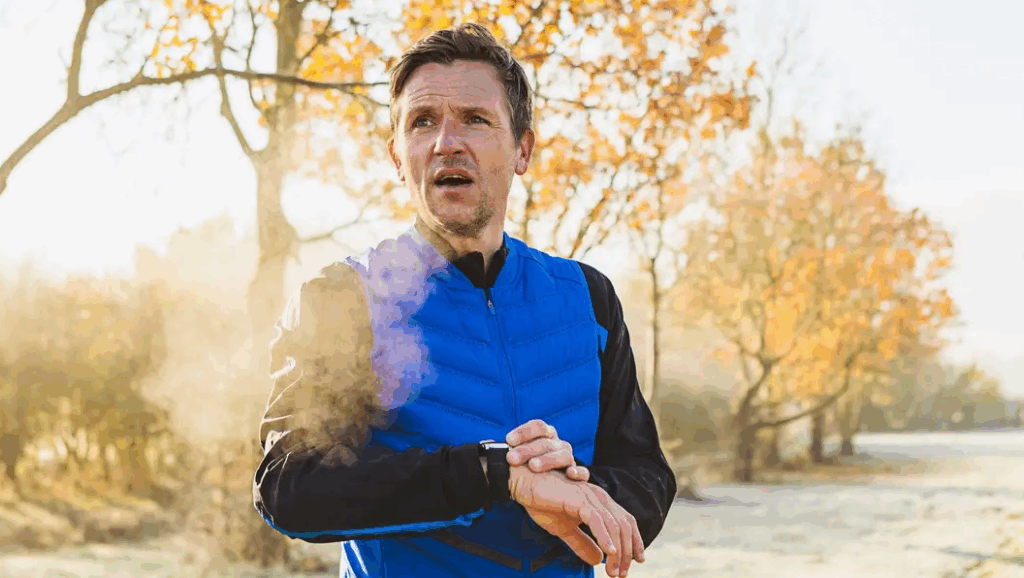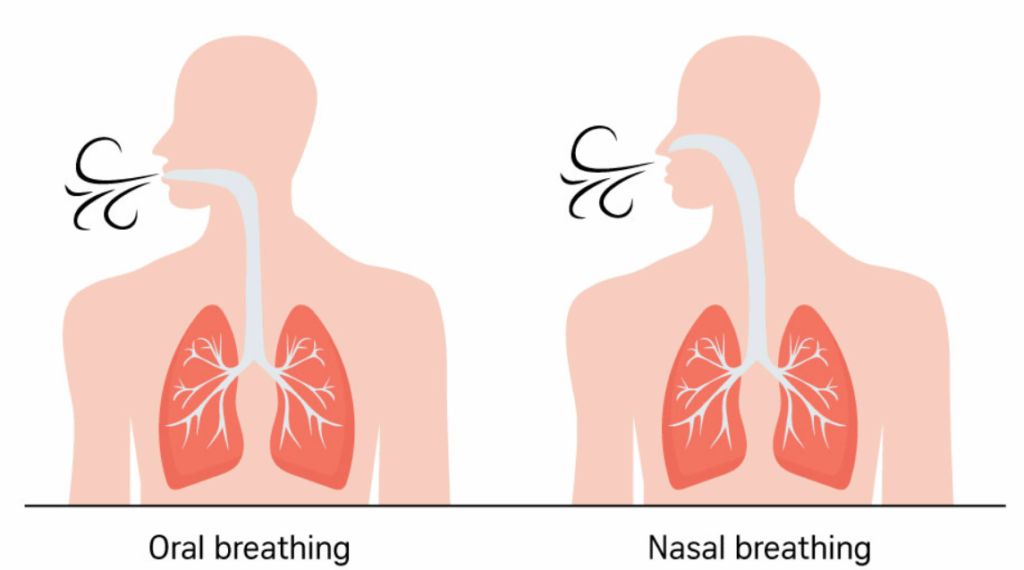You’ve probably felt that burning sensation in your lungs during a run, forcing you to slow down or stop completely. Proper breathing can make the difference between hitting the wall early and maintaining your pace for miles. Learning to breathe more efficiently isn’t just about inhaling and exhaling. It helps your body use oxygen better, keeps your muscles fueled, and helps you run longer without tiring out.
Even small adjustments in your breathing can make running feel smoother and less exhausting.
Why Breathing Impacts Your Running Performance
While many runners focus primarily on leg strength and cardiovascular fitness, proper breathing is the often-overlooked foundation of running performance. To keep your muscles energized during a run, they need a steady oxygen supply, and your breathing patterns are key to making that happen.
When you breathe inefficiently, you’re fundamentally running with the parking brake on. Your respiratory efficiency determines how much oxygen reaches your bloodstream with each breath. Poor breathing patterns force your body to work harder for the same amount of energy, accelerating fatigue and slowing you down.
Learning to breathe properly isn’t just about comfort. It’s about performance. With ideal breathing techniques, you’ll maintain energy levels longer, recover faster between intense efforts, and ultimately run further with less perceived exertion.

Master the Basics of Proper Breathing Form
Breathing techniques that maximize oxygen intake and reduce fatigue are fundamental to running performance optimization. Start by targeting diaphragm engagement. Take deep belly breaths instead of shallow chest breaths. Notice your abdomen expanding outward with every inhalation.
Run with relaxed shoulders and an upright posture. Tensions in your upper body block airflow and waste energy. Use deliberate breathwork to inhale slowly through the nose or mouth, fill your lungs, and then exhale fully to release carbon dioxide.
At first, these techniques may feel unnatural. But proper breathing becomes automatic with practice. More oxygen reaches your muscles, and you’ll keep energy levels up longer on runs.

Nasal vs Mouth Breathing During Runs
The debate between nasal and mouth breathing has divided runners for years, yet understanding when to use each technique can greatly boost your performance.
The nasal breathing carries several advantages in lower-intensity runs. Filters air, increases oxygen uptake, and helps maintain a rhythm. You’ll breathe more naturally, avoiding hyperventilation that causes fatigue.
When you pick up the pace, however, mouth breathing becomes necessary to meet your body’s increased oxygen demands. Your lung capacity simply requires more air volume than your nostrils can provide during intense efforts. Many experienced runners adopt a hybrid approach, breathing through both nose and mouth during moderate efforts, then shifting primarily to mouth breathing during sprints or hill climbs.

Coordinate Your Breathing with Your Stride
Rhythmic breathing in conjunction with a stride can improve your running. Try the popular 3:2 pattern. Take three steps, inhale and exhale for two, as your body naturally switches which foot strikes on exhalation, reducing stress on one side of your body and preventing side stitches.
A 4:4 or 3:3 breathing rhythm works well for an easy run. More intense efforts may require a faster 2:1 breathing rhythm. 1 pattern. What matters is finding what feels sustainable for your pace. Your breathing should feel controlled, not forced.
You’ll notice improved stamina as your muscles receive oxygen more consistently. Practice this coordination during your regular runs, and you’ll soon find it becomes second nature.
Build Breath Control with Targeted Training
Breath control requires regular practice outside of your runs. Try incorporating specific breathing drills into your weekly routine, like diaphragmatic breathing exercises where you lie on your back, place a hand on your stomach, and practice deep belly breathing for 5-10 minutes daily.
Interval training builds respiratory strength. Alternate between 30-second high-intensity bursts with controlled breathing and 90-second recovery periods. When recovering, get back to your normal breathing quickly.
For endurance enhancement, consider adding swimming or yoga to your training plan. Swimming forces rhythmic breathing patterns, while yoga teaches breath awareness during movement. Both activities strengthen your respiratory muscles without the impact of running, giving you powerful breath control that transfers directly to your running performance.
Common Breathing Mistakes Runners Should Avoid
Many runners sabotage their performance without realizing they’re making critical breathing mistakes. Holding your breath during challenging sections, like hills or final sprintscuts off oxygen supply and accelerates fatigue. Your muscles need consistent oxygen, especially when working hardest.
Tensing your shoulders and upper body while running creates shallow, inefficient breathing patterns. Keep your shoulders relaxed and chest open to maximize lung capacity with each breath.
Don’t ignore warning signs like dizziness or unusual shortness of breath, which indicate your breathing isn’t supporting your effort level. Pushing through these symptoms can lead to hyperventilation and unnecessary fatigue.
Correcting these common mistakes will help you maintain energy and run longer with less effort.
Frequently Asked Questions
Should I Change My Breathing Technique in Different Weather Conditions?
Yes, adjust your breathing in cold weather by warming air through your nose first. In hot conditions, you’ll need deeper breaths to cool down. Humid environments require more conscious breathing to maintain oxygen flow.
Can Improper Breathing Affect My Recovery Time After Runs?
Yes, improper breathing can lengthen your recovery time. When you don’t breathe efficiently during runs, your muscles accumulate more lactic acid and stress, making it harder for your body to repair itself afterward.
How Does Altitude Affect Running Breath Control Strategies?
At higher altitudes, adapt your breathing since there’s less oxygen. Slow your pace, use deeper belly breaths, extend your inhale-exhale ratio, and consider 2:1 breathing patterns until you’ve acclimated.
Will Breathing Exercises Help With Running-Related Anxiety?
Yes, breathing exercises can calm your running anxiety. You’ll reduce pre-run nervousness, control your thoughts during difficult stretches, and develop a reliable mental tool that grounds you when panic starts creeping in.
Does Breathing Through a Mask Impact Running Performance?
Yes, mask breathing restricts airflow, which can reduce your oxygen intake by 5-20%. You’ll likely feel more fatigued during runs, but your respiratory muscles may adapt over time with consistent training.





